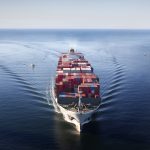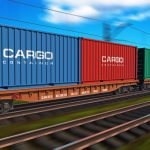By Susan Trautman
Moving freight to and from the landlocked Midwest can be a challenge with major ports being thousands of miles away. There is hope. Between the Panama Canal widening project completing in June and the Indianapolis Rail Ramp working out its kinks over the last three years, more cost effective and time efficient import options are available and on the horizon with proper supply chain planning for Midwest cargo imports.
The Panama Canal inaugural opening ceremony is slated for June 29. It has taken ten years and $5.5 billion to double the canal’s capacity by adding a new set of locks to accommodate larger container ships. This will allow ships more than 2.5 times the size of the current limit to pass through the waterway.
 Larger ships mean increased capacity that will profoundly affect the international transportation industry as costs could make a significant drop to move cargo from Asia to U.S. East Coast (USEC) ports. The economics are this. More capacity equals more goods that will move faster between the Pacific and Atlantic oceans, decreasing transport costs.
Larger ships mean increased capacity that will profoundly affect the international transportation industry as costs could make a significant drop to move cargo from Asia to U.S. East Coast (USEC) ports. The economics are this. More capacity equals more goods that will move faster between the Pacific and Atlantic oceans, decreasing transport costs.
When managing a supply chain, cost is typically top of mind. We have seen an ongoing drop in Asia to USEC ports shipping rates since the beginning of 2016. These low rates are a boon for importers searching for savings. If importers can plan their production schedules for this longer, but more cost effective transit of about 14 days time, they can make an impactful reduction to their overall freight costs.
Moving cargo through the Panama Canal to a USEC port also means it can be transported efficiently via rail or truck into the Midwest. Rail ramps that could see the biggest change are Louisville, Kentucky, Memphis, Nashville and Indianapolis. Gulf ports also will benefit from the canal’s expansion, as they will take in more vessels from Asia and South America.
Even without the canal open, USEC and U.S. Gulf ports are realizing increased cargo shipments. Several years ago, there were labor issues at West Coast ports. Companies began to figure out how to reroute their cargo shipments around these issues, and it appears this trend has continued. JOC.com, an industry publication, analyzed data from July 2014 to March 2015 showing an increased share of Asian imports to U.S. Gulf and East Coast ports over the nine month period.
Indianapolis Rail Ramp
In 2013, the Intermodel Indiana Rail Ramp opened for business in downtown Indianapolis. Simply called the Indy Ramp by its partners, it provides access to major Asian ports through Canadian and West Coast ports. On its website, the business boasts an average 22-day travel time for cargo import shipments. It also touts the easy highway access to major interstates (I-70 and I-65) from its downtown location.

The Indy Ramp has provided a great alternative to the traditional Chicago ramp routing. Truck turn times at the Indianapolis ramp average 16 minutes. These turn times in LA/Long Beach take up to two hours. In Chicago, a traditional route for Midwestern companies, it could be up to two hours hours. Deliveries can sometimes be made the same day as the container becomes available. Flexibility with local truckers paired with the local rail ramp has increased efficiencies in the supply chain for many local importers. Simply said, if a company wants to be more in control knowing when and where your cargo will arrive, this is a great option.
The opening of the Panama Canal is finally happening and the Indy Rail Ramp is becoming more sophisticated. It will take time to realize the lasting effects on the industry as a whole, but those of us in the Midwest are welcoming the opportunities these new modes for cargo create.
Consider dedicating a small portion of your shipment volumes to the USEC ports, as long as your supply chain can accommodate extended transit times. These cost savings won’t evaporate any time in the near future and will benefit companies that embrace new options and make an effort to work this model. It will be an evolution type of transition as increased volume, larger vessels and current USEC infrastructures (low bridges, truck traffic constricted pier space, longer container dwell times) will need time to adjust to this new shipping landscape.
